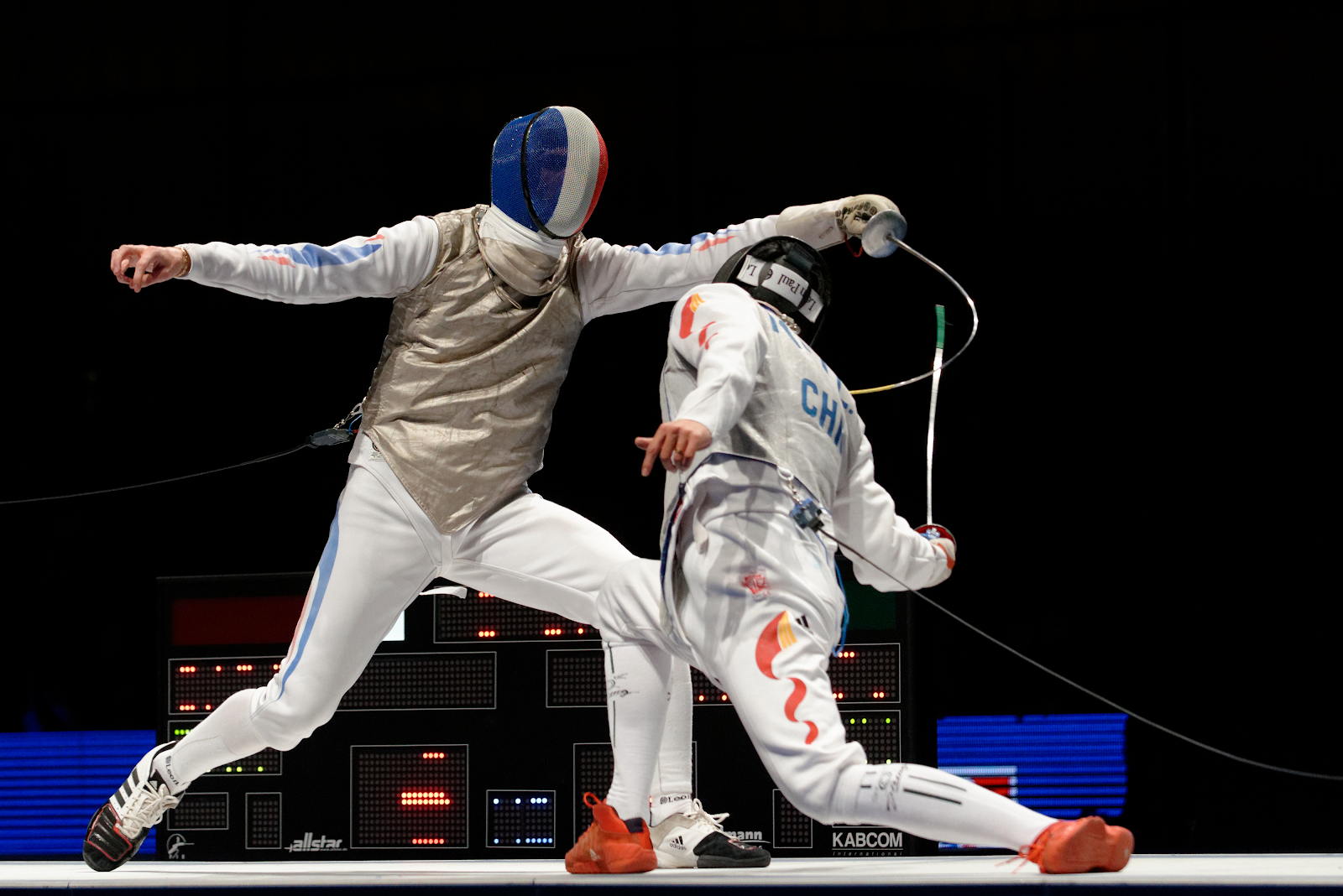Intro
Fencing came in vogue in the western world in the 16th century, where duelling to settle disputes and questions of honor were common. Over the centuries, fencing has developed into the sport we see on the Olympics every four years and several significant schools and disiplines have established themselves since. In the early 1900s, fencing was still pretty common in the US but although its popularity has fallen since, in recent years, fencing seems to be making a comeback.
Since the olden days where the match was decided by who drew first blood or killed their opponent, the sport has lost its bloodthirsty edge and has since become popular worldwide. Currently as one of the safest sports out there, there's no better time to get into fencing (even during a pandemic).
Why should you learn how to fence?
- Fencing is more cerebral than most sports out there. The mental exercise is unparalelled. A successfully-executed move makes you feel like a chess grandmaster.
- It trains your concentration, celerity and adaptibility. In a sport that moves faster than the speed of bullets, it takes a lot to keep up and even make sense of what's going on.
- Fencing has no limits. We have fencers as young as six all the way to seniors. Our dedicated wheelchair fencing league opens up the sport even more. There's something for everyone.

Now that we know why fencing is awesome, let's get you familiarised in the different flavors of fencing.
Épée
Épée: The Give-and-Take
Épée is the best weapon for beginners because it has the simplest rules. The épée is a thrusting weapon which means it only scores on the tip. The blade itself is triangular and is the heaviest of all three weapons. The target area is the entire body so you can hit anywhere from the tip of your toes to the top of your head.
Since there’s no right-of-way in épée, any touch that you score on your opponent’s body counts as a point and if both you and your opponent strike each other at the same time, it’s a double touch and both of you get a point.
Out of all three weapons, épée tends to be the slowest-moving because just as you’re trying to hit the other person, you also have to avoid being hit.
Épée is a good place to start if you’re a beginner so you can learn the basic rules and moveset without worrying about right-of-way. It also requires more stamina rather than explosiveness compared to the other two weapons.

While height and limb length is an advantage in all three weapons, the advantage is most obvious in épée. If you like maining tanks or frontline characters, you’ll like épée.

Height Advantage
Being taller/having longer limbs grants a stark advantage. Short fencers need to overcome a lot more to defeat taller opponents.

No Rules
Without right-of-way and having the whole body as a target, épée is the weapon with the least rules. Go crazy!
Foil
Foil: Don't Know What Hit'Em
Foil is the most popular weapon worldwide. The blade is rectangular and the lightest in weight out of all three. Due to the blade’s flexibility, flicking is a viable option although the ability has been nerfed in recent years.

The foil is also a thrusting weapon. However, the amount of force required to register a point is significantly less than an epee meaning that there’s a greater chance that even grazing your opponent with the tip of the blade would register a point.
Foil does observe right-of-way. Much like how a person who is threatened with a real sword will naturally prioritise a defensive action to avoid being hit before attempting their offence, right-of-way requires that fencers maintain their priority in order for their point to count.
The target area is the torso. Since the target area doesn’t include the arms and hands, the bell guard of the foil is the smallest out of all weapons. Foil requires the most point control and is arguably the most cerebral of the three weapons, requiring the most flexibility in both thought and body. Foil requires adaptation on the fly and explosiveness so rather than stamina or brute strength, reflexes, precision and speed are key. If you like maining rogue/thief/berserker/flank and otherwise glass cannon characters, then foil is for you.

Fast Reflexes
Right-of-way and the flexibility of a foil means that conditions can change instantly. Reflexes will save you from those sneaky flicks of your opponent's blade.

Speed
The weapon's lightness and the dizzying pass of priority means that actions in foil need to be fast and the mind even faster.

Great Equaliser
Height, size, weight and arm reach matter the least in foil. The only limit is your muscle memory, celerity and brainpower.
Sabre
Sabre: The Fast & the Furious
Sabre is the fastest weapon and arguably the most exciting to watch. The sabre is a slashing weapon which means points can be registered all along the blade. Since the scoring portion of the weapon isn’t limited to the point, sabre fencers typically fence at a much closer distance than the other two weapons.

Sabre also observes right-of-way. While foil’s explosiveness is more measured and contained, sabreists come right out the gate swinging.
The target area is the entire upper body, from the hips to your head. This greater target area and the slashing nature of sabre mean that there is both more to hit and more to hit with, upping the stakes and tension.
Since sabre fencing came from the cavalry sword, sabres have a sick bell guard that curves around the hand, allowing their fencers to feel like pirates battling the bourgeoisie, only with better personal hygiene.
Sabre requires not only speed and reflexes but also some strength. If you like maining DPS or melee characters, then you’ll love sabre.

Explosiveness
The fastest weapon out of the three, each point is often decided in a couple of seconds.

Slashing Weapon
Instead of Arya from GoT, think of pirates and soldiers on horseback. The difference in how you score in sabre vs the other three weapons makes it the odd one out.

Aggressive
Sabreists tend to fence at closer range and the unforgiving rules of right-of-way means that a purely defensive strategy is less viable.

Strategic
It's not that the other weapons aren't also strategic mindgames but with the speed of sabre leaving little room to think, a strategy and potential counterattacks needs to be decided before you engage.


